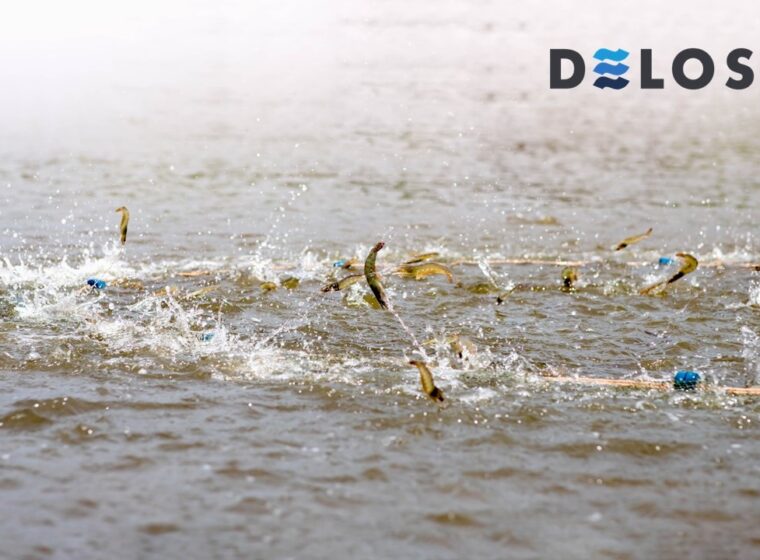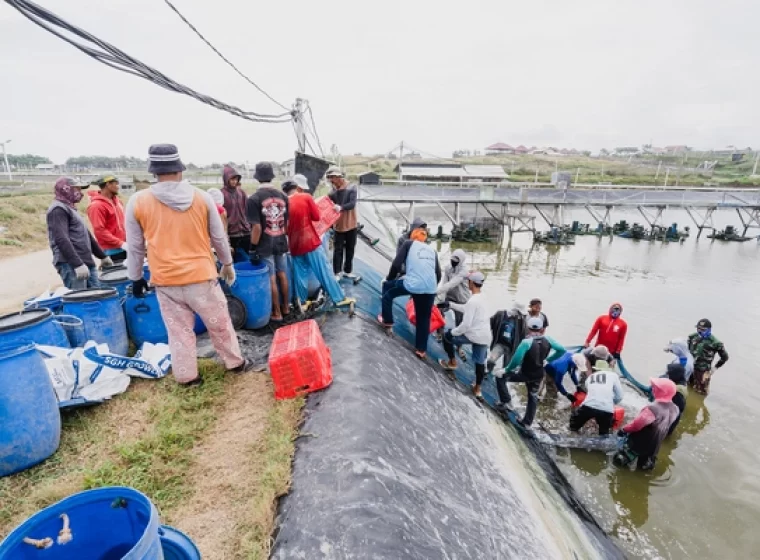Partial harvest of vannamei shrimp is something that farmers often do to maximize profits during cultivation, especially for those who implement semi-intensive, intensive super-intensive cultivation systems.
Vannamei shrimp is a species that is popular and most sought after by the global market. This shrimp has a fast growth rate and is suitable for aquaculture, so farmers widely choose it.
In order to maximize profits and ensure sustainable cultivation, farmers need to be aware of the benefits of partial harvesting. Let’s read more of these benefits in this article.
Also Read: These are 7 Tips for Successful and Profitable Vannamei Shrimp Harvest
What Is Partial Harvest?
Partial harvest is a technique for harvesting only a portion of the shrimp in the pond, allowing the rest to grow and develop. This harvesting technique can be done several times in one cultivation cycle, allowing farmers to manage their harvests and maximize profits.
Partial harvesting is a common technique used in vannamei shrimp farming to help regulate population densities and ensure consistent growth rates. By doing partial harvests, farmers can prevent overcrowding which can lead to stunted shrimp growth, disease outbreaks, and reduced survival rates.
Shrimp Partial Harvest Preparation
Before carrying out a partial harvest in vannamei shrimp farming, you must carefully prepare and plan for a successful harvest. Here are some preparatory steps you can take:
1. Determine the Optimal Harvest Size
Farmers must determine the ideal size for harvesting shrimp based on demand and market prices. This will help ensure the harvested shrimp can be sold at the most profitable prices.
2. Check the Water Quality
Farmers should check water quality parameters such as temperature, salinity, dissolved oxygen, etc., to ensure they are within the appropriate range for shrimp. If water quality parameters are less than optimal, farmers must first adjust them.
3. Prepare Harvest Equipment
The following partial harvest preparation that must be done is to prepare the equipment for harvesting. Farmers must ensure that all necessary equipment, such as nets, pumps, and baskets to accommodate harvested shrimp, is available. In addition, it must also be assured that all equipment is clean and working correctly.
4. Transportation Preparation
Farmers also have to prepare transportation for harvested shrimp. This ensures the shrimp are transported quickly and efficiently to the processing site.
Also Read: How to Cultivate Vannamei Shrimp from Preparation to Harvest
Partial Harvest Process
Partial harvesting usually uses nets to take 30% of the total shrimp population in the pond. After that, the shrimp are typically put in a container that has been prepared on the side of the pond.
The harvesting process involves placing nets at the bottom of the ponds, spreading the feed, and waiting a few moments for the shrimp to approach the nets to harvest them. This method is quite effective to do.
Harvesting usually starts at night, when the shrimp swim more freely. Feeding should be stopped a few hours before harvest. The process includes the following steps: turning off the aerator near the trap, lowering the net to the bottom of the pond, spreading a few handfuls of feed over the net area, and then waiting about 3-10 minutes.
Pull the net using the rope tied at the corners when a lot of shrimp are trapped. However, it is necessary to ensure that the number of shrimp caught is at most 30% of the total population in the pond.
Benefits of Partial Harvesting Vannamei Shrimp
Partial harvesting is a technique that harvests only a portion of the shrimp in the pond, leaving the rest to grow to a specific size. This harvest can be done several times during the production cycle, allowing farmers to maximize profits.
One of the main benefits of partial harvesting is that it allows farmers to take advantage of fluctuations in the price of vannamei shrimp on the market. By harvesting only a portion, farmers can manage sales to coincide with periods when shrimp prices are rising.
Partial harvests can also help farmers reduce production costs. Farmers can avoid the costs associated with harvesting and processing large quantities of shrimp all at once by only harvesting a portion at a time. This includes labor, equipment and transportation costs.
Apart from the economic side, partial harvest is also beneficial from the health side of the shrimp. By allowing some of the shrimp in the pond to continue to grow, farmers can help maintain a healthy ecosystem. This can help farmers reduce the risk of disease outbreaks and other problems during farming.
Also Read: 4 Types of Vannamei Shrimp Harvest Time
Harvest Your Shrimp with DELOS!
Partial harvesting of vannamei shrimp can help reduce shrimp density in ponds. This technique can be profitable for farmers to maximize profits when cultivating.
For those who need assistance with the partial harvest process, DELOS is the right choice for you.
DELOS is the best science, technology and operational management-based aquatech company to help you manage your shrimp pond. Including one of them is the harvesting process. Our harvesting process is carried out by experts in a transparent manner and at the best price.
Also, DELOS has an integrated supply chain, AquaLink, to connect you with producers and farm owners to obtain and sell pond products at competitive prices.
Contact the DELOS Team via contact@delosaqua.com or submit via the contact column on our website, www.delosaqua.com, to join our ecosystem and explore new opportunities in the aquaculture sector.




